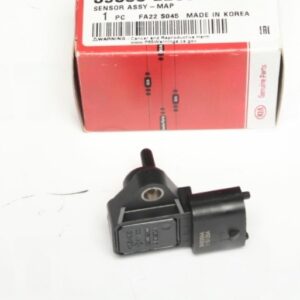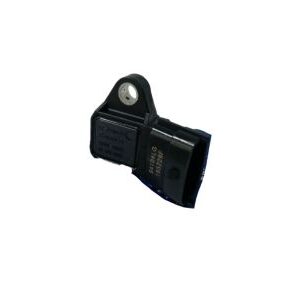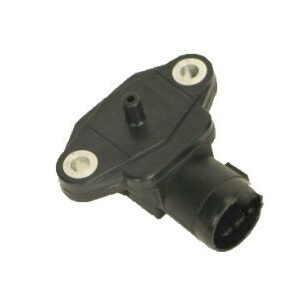Title: Navigating Engine Performance: The Role of MAP Sensors
Introduction:
In the intricate ecosystem of engine management, there’s a small yet indispensable component that acts as the engine’s guiding star, ensuring optimal performance and efficiency – the MAP sensor. Often operating behind the scenes, MAP sensors play a crucial role in monitoring manifold pressure and providing vital data to the engine control unit (ECU). Join us as we explore the world of MAP sensors, unraveling their function, significance, and the pivotal role they play in keeping your engine running smoothly and efficiently.
Understanding MAP Sensors:
MAP sensors, short for Manifold Absolute Pressure sensors, are specialized electronic devices designed to measure the pressure inside the intake manifold of an internal combustion engine. They are typically mounted on or near the intake manifold and continuously monitor the air pressure to provide real-time feedback to the engine control unit (ECU) or powertrain control module (PCM).
How Do MAP Sensors Work?
The operation of MAP sensors is based on the principle of piezoresistivity, which is the ability of certain materials to change their electrical resistance in response to mechanical stress. As air enters the intake manifold, the pressure changes, causing the MAP sensor’s diaphragm to deflect. This deflection alters the electrical resistance of the sensor, producing a corresponding voltage signal. The ECU/PCM interprets this signal and uses it to calculate engine load, air/fuel ratio, and ignition timing, among other parameters, to optimize engine performance.
Importance of MAP Sensors:
The importance of MAP sensors in modern engines cannot be overstated. These small but mighty components serve several critical functions:
1. Engine Performance Optimization: MAP sensors provide vital data to the engine control unit (ECU), allowing it to adjust fuel delivery, ignition timing, and other parameters to optimize engine performance under various operating conditions.
2. Fuel Efficiency: By accurately measuring manifold pressure, MAP sensors help ensure the correct air/fuel ratio is maintained, maximizing fuel efficiency and reducing emissions.
3. Emissions Control: Proper engine management, facilitated by MAP sensors, helps minimize harmful emissions by optimizing combustion efficiency and reducing the production of pollutants.
4. Turbocharger Control: In turbocharged engines, MAP sensors play a crucial role in controlling boost pressure, ensuring optimal turbocharger performance and preventing over-boost conditions that could lead to engine damage.
Maintenance and Replacement:
To ensure optimal engine performance and reliability, it’s essential to properly maintain your MAP sensor. Over time, MAP sensors may become contaminated with dirt, oil, or other debris, leading to decreased accuracy or failure. Regular inspection and cleaning of MAP sensors, as part of routine maintenance, can help prevent issues and ensure proper function. Signs of a faulty MAP sensor include rough idling, poor acceleration, decreased fuel efficiency, and illuminated check engine light.
Conclusion:
In conclusion, MAP sensors may be small in size, but their impact on engine performance, efficiency, and emissions control is significant. By continuously monitoring manifold pressure and providing vital data to the engine control unit (ECU), MAP sensors play a crucial role in optimizing engine operation and ensuring smooth and efficient performance. So, the next time you hit the road, take a moment to appreciate the unsung hero working behind the scenes – the MAP sensor.
In stock (can be backordered)
$18,926.31
Title: Navigating Engine Performance: The Role of MAP Sensors
Introduction:
In the intricate ecosystem of engine management, there’s a small yet indispensable component that acts as the engine’s guiding star, ensuring optimal performance and efficiency – the MAP sensor. Often operating behind the scenes, MAP sensors play a crucial role in monitoring manifold pressure and providing vital data to the engine control unit (ECU). Join us as we explore the world of MAP sensors, unraveling their function, significance, and the pivotal role they play in keeping your engine running smoothly and efficiently.
Understanding MAP Sensors:
MAP sensors, short for Manifold Absolute Pressure sensors, are specialized electronic devices designed to measure the pressure inside the intake manifold of an internal combustion engine. They are typically mounted on or near the intake manifold and continuously monitor the air pressure to provide real-time feedback to the engine control unit (ECU) or powertrain control module (PCM).
How Do MAP Sensors Work?
The operation of MAP sensors is based on the principle of piezoresistivity, which is the ability of certain materials to change their electrical resistance in response to mechanical stress. As air enters the intake manifold, the pressure changes, causing the MAP sensor’s diaphragm to deflect. This deflection alters the electrical resistance of the sensor, producing a corresponding voltage signal. The ECU/PCM interprets this signal and uses it to calculate engine load, air/fuel ratio, and ignition timing, among other parameters, to optimize engine performance.
Importance of MAP Sensors:
The importance of MAP sensors in modern engines cannot be overstated. These small but mighty components serve several critical functions:
1. Engine Performance Optimization: MAP sensors provide vital data to the engine control unit (ECU), allowing it to adjust fuel delivery, ignition timing, and other parameters to optimize engine performance under various operating conditions.
2. Fuel Efficiency: By accurately measuring manifold pressure, MAP sensors help ensure the correct air/fuel ratio is maintained, maximizing fuel efficiency and reducing emissions.
3. Emissions Control: Proper engine management, facilitated by MAP sensors, helps minimize harmful emissions by optimizing combustion efficiency and reducing the production of pollutants.
4. Turbocharger Control: In turbocharged engines, MAP sensors play a crucial role in controlling boost pressure, ensuring optimal turbocharger performance and preventing over-boost conditions that could lead to engine damage.
Maintenance and Replacement:
To ensure optimal engine performance and reliability, it’s essential to properly maintain your MAP sensor. Over time, MAP sensors may become contaminated with dirt, oil, or other debris, leading to decreased accuracy or failure. Regular inspection and cleaning of MAP sensors, as part of routine maintenance, can help prevent issues and ensure proper function. Signs of a faulty MAP sensor include rough idling, poor acceleration, decreased fuel efficiency, and illuminated check engine light.
Conclusion:
In conclusion, MAP sensors may be small in size, but their impact on engine performance, efficiency, and emissions control is significant. By continuously monitoring manifold pressure and providing vital data to the engine control unit (ECU), MAP sensors play a crucial role in optimizing engine operation and ensuring smooth and efficient performance. So, the next time you hit the road, take a moment to appreciate the unsung hero working behind the scenes – the MAP sensor.
| Warehouse | Inventory at warehouse 2 |
|---|




Get E-mail updates about our latest products and special offers.
Sensors and More is Jamaica’s ultimate online auto parts store. Established in 2020, we specialize in genuine electrical parts for Japanese, Read more…
Reviews
There are no reviews yet.